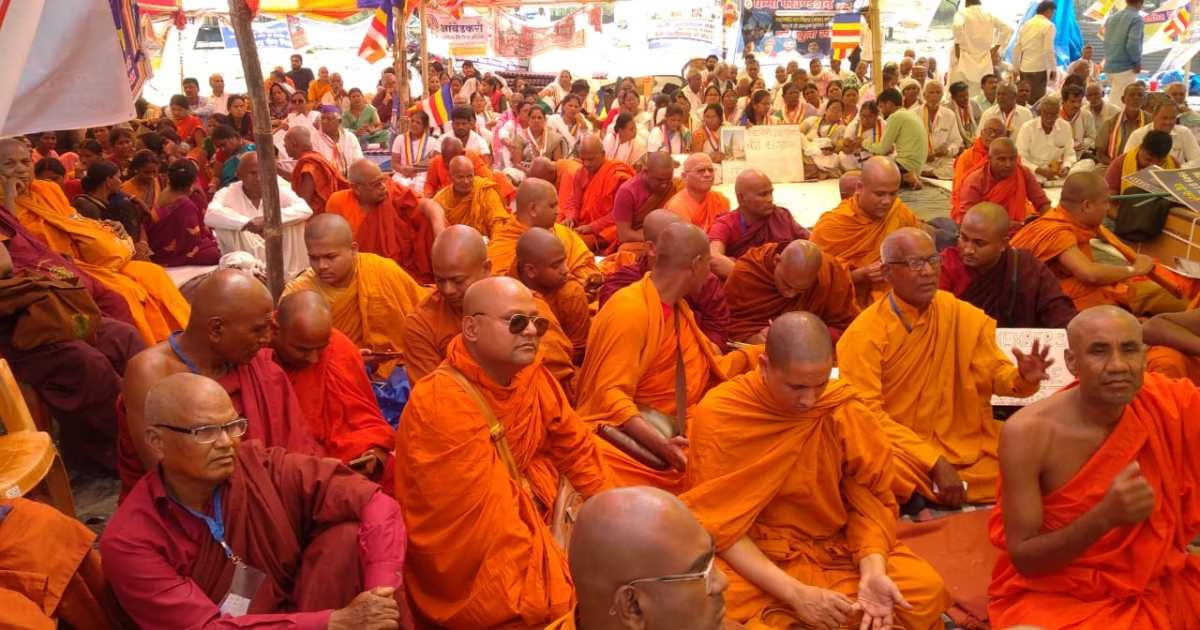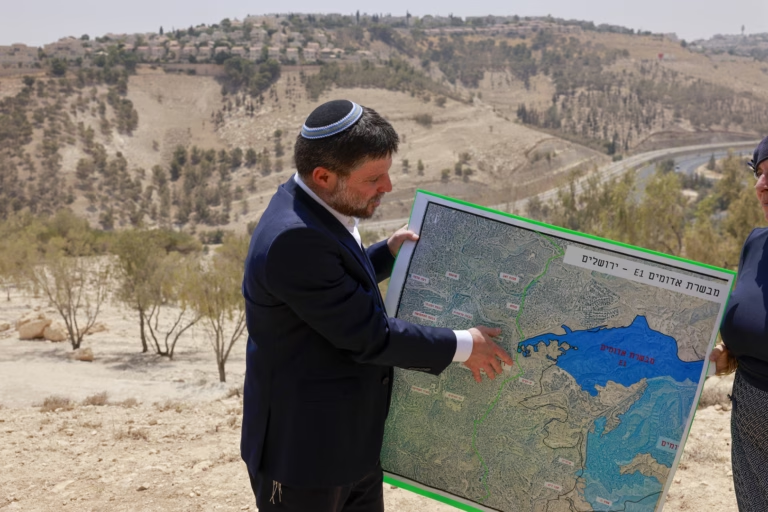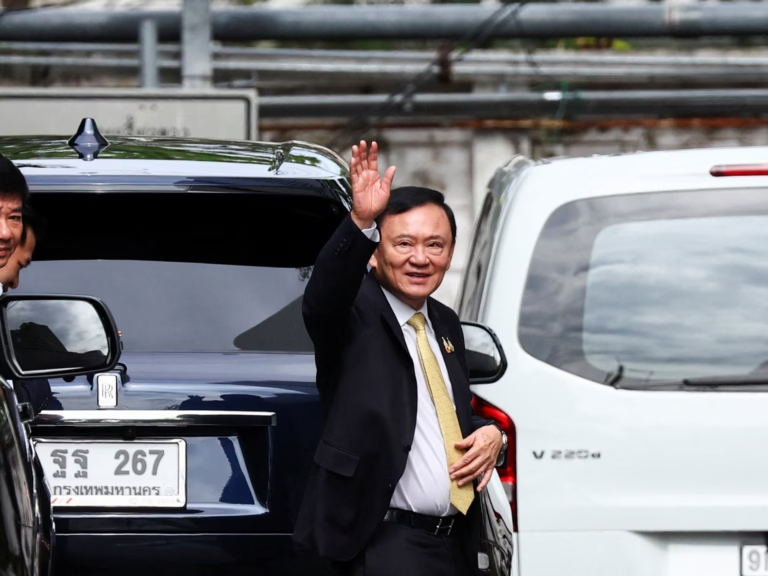Bauddh has visited the town in eastern India’s Bihar state, where the Buddha attained enlightenment, ever since he was 15. “But I’ve never seen such a scene. Buddhists from all over the country are gathering here,” he said.
For once, they aren’t just in Bodh Gaya for a pilgrimage. They are part of a protest by Buddhists that has spread across India in recent weeks, calling for the Mahabodhi Temple, one of the faith’s most sacred shrines, to be handed over exclusively to the Buddhist community.
Several Buddhist organizations have held meetings, from the north’s Ladakh bordering China to Mumbai in the west and Mysuru in the south. Now, more and more people are heading to Bodh Gaya to join the main protest, said Akash Lama, general secretary of the All India Buddhist Forum (AIBF), the collective leading the campaign. India is home to an estimated 8.4 million Buddhist citizens, according to the 2011 census.
For the last 76 years, the temple has been administered by an eight-member committee — four Hindus and four Buddhists — under the Bodh Gaya Temple Act of 1949, a Bihar government law.
However, protesters, including monks dressed in saffron carrying loudspeakers and banners, are demanding the repeal of that Act and exclusive control of the temple for the Buddhists. They argue that Hindu monks, emboldened by the fact that the community holds sway under the law, have begun performing rituals that contravene the principles of Buddhism — and that other more subtle forms of protest have been unsuccessful.
The Bodh Gaya Math, a Hindu monastery that conducts rituals within the complex, maintains that it has played a central role in maintaining the shrine for centuries and insists that the law is on its side.
“The Buddha was against Vedic rites,” said Bauddh, who traveled 540 kilometers (335 miles) from Chhattisgarh in central India to Bodh Gaya. “All religions in India ‘take care and manage their own religious sites,’ so why do Hindus have a say in the management of a Buddhist religious place?”
Sitting with his plate of hot rice and lentils, he continued, “Buddhists have not been granted justice [so far], what can we do if not stage a peaceful protest?”
Old grievance, new trigger
Just 2 kilometers (1.2 miles) away from the sacred banyan tree within the Mahabodhi Temple complex, where the Buddha is believed to have meditated, minibuses arrive with protesters from different parts of the country on a dusty road from Patna, Bihar’s capital.
For some, who regularly visit the shrine, concerns about Hindu rituals being conducted at the temple complex are not new.
“Ever since we’ve visited, we felt it was disheartening to see rituals prohibited by Lord Buddha being performed by people of other religions in this courtyard,” said 58-year-old Amogdarshini, who traveled from Vadodara in the western state of Gujarat to join the protests at Bodh Gaya.
In recent years, Buddhists have complained to local, state, and national authorities about Hindu rituals. In 2012, two monks filed a petition before the Supreme Court, seeking repeal of the 1949 law that gives Hindus a say in running the shrine. The case hasn’t even been scheduled for a hearing 13 years later. Lately, the monks have again lodged complaints with the state and central governments and organized street meetings.
But things reached a climax last month. On February 27, more than two dozen Buddhist monks sitting on a 14-day hunger strike at the temple were forcibly removed by the state police at midnight and relocated outside the temple.
“Are we terrorists? Why can’t we protest in the courtyard that is ours?” asked Pragya Mitra Bodh, secretary of the National Confederation of Buddhists of India, who came from Jaipur, in the western state of Rajasthan, with 15 other protesters. “This temple management act and the committee setup undermine our Buddhist identity, and the Mahabodhi temple can never fully be ours unless the act is repealed.”
Since then, the protests have intensified, and some, like Amogdarshini, who had already spent a couple of weeks in Bodh Gaya in January, have returned to join the protest.
Stanzin Suddho, a travel agent from Ladakh who is currently in Bodh Gaya, said the protests are funded by contributions from devotees. “We don’t stay for long,” he said, adding that he came with 40 others. “Once we return, more people will join.”
A history of shifting ownership
At the core of the struggle for the Mahabodhi Temple, a UNESCO World Heritage site, is its controversial legacy.
The temple was built by Emperor Ashoka, who visited Bodh Gaya in 260 BCE after embracing Buddhism, about 200 years after the Buddha’s enlightenment.
For centuries, it was under Buddhist control until major political changes in the region in the 13th century, said Imtiaz Ahmed, professor of medieval history at Patna University. The invasion of India by Turko-Afghan general Bakhtiyar Khilji “led to the decline of Buddhism in the region,” Ahmed said.
According to UNESCO, the shrine was largely abandoned between the 13th and 18th centuries before the British undertook renovations.
The shrine’s website states that in 1590, a Hindu monk named Ghamandi Giri arrived at the temple and began conducting rituals, setting up the Bodh Gaya Math, a Hindu monastery. Ever since then, the temple has been in the control of Giri’s descendants.
In the late 19th century, visiting Sri Lankan and Japanese Buddhist monks founded the Maha Bodhi Society to lead a movement to reclaim the site.
In 1903, these efforts led India’s former viceroy, Lord Curzon, to attempt to broker an agreement between the Hindu and Buddhist parties, but he was unsuccessful. Both sides began to garner political support, and two years after India gained its independence in 1947, Bihar’s government passed the Bodh Gaya Temple Act. The law transferred the temple’s administration from the head of the Bodh Gaya Math to the eight-member committee, now led by a ninth member, the district magistrate — the top bureaucrat in charge of the district.
However, Buddhists claim that the Bodh Gaya Math, as the most influential institution on the ground, effectively runs the complex on a daily basis.
Hindus’ ownership claim
Swami Vivekananda Giri, a Hindu priest who currently oversees the Bodh Gaya Math, remains undeterred by the protests, describing the agitation as “politically motivated” — with an eye toward Bihar’s state legislature elections later this year.
“Our Math’s teachings consider Lord Buddha as the ninth reincarnation of [Hindu] Lord Vishnu, and we see Buddhists as our brothers,” Giri told Al Jazeera. “For years, we have hosted Buddhist pilgrims from other countries and never banned them from praying on the premises.”
Giri says the Hindu side has been “generous” in giving Buddhists a share in the committee’s management.
“If you repeal the Act, the temple will solely belong to the Hindu side, because we owned it before the Act and India’s independence,” Giri argues, jabbing at the protesters. “When Buddhists abandoned the temple after Muslim rulers’ invasions, we restored and took care of it. Yet we never treated Buddhist visitors as outsiders.”
Back at the protest site, Akash Lama, who is leading the demonstrations, suggests that protesters have little hope that the current government, led by the Hindu nationalist Bharatiya Janata Party (BJP), and the state government, in which the BJP is a partner, will address their grievances.
“The Act is being used to erode Buddhists’ rights. Buddhists should have rights over the temple, and it should be handed over to them,” he said. “We are disenchanted with the government and the Supreme Court for not hearing our cases.”
However, Bauddh, the protester from Chhattisgarh, still feels hopeful — not in the government, but in the people he sees around him. “This unity strengthens our protest,” he said.







